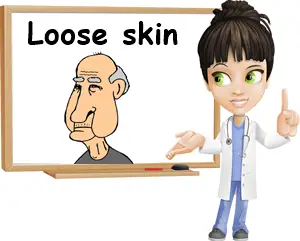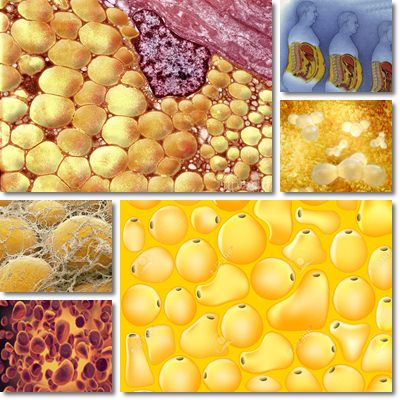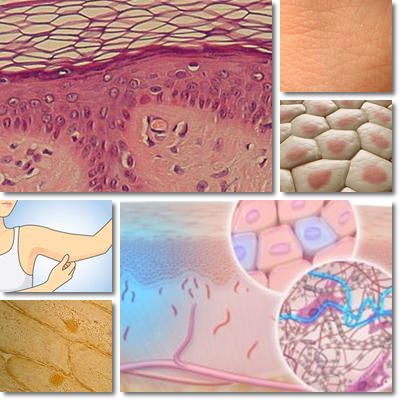The older we get, the more we fear the signs of old age. And one of the most feared signs of growing older is getting loose skin. But we don’t necessarily have to be fifty or more to exhibit loose skin.
Pregnancy, fluctuating weight, pollution, poor eating and bad lifestyle habits can all cause our skin to lose its flexibility and become saggier. No matter the cause behind it, loose, drooping skin is always a sign our body has maybe lost some of its regenerative powers and we are thus no longer in the prime of our lives.
While genetics plays a fairly important part in determining how well we age, or how soon, there are some external factors that can also exert a great influence on how our skin looks after a certain age.
Most of the time, we do hold some control over these factors and can learn to avoid them so that we may enjoy great health and beautiful skin. Our actions as well as our lack of involvement in improving certain aspect of our life can determine how soon we will get loose skin.

Loose, droopy, saggy, flaccid skin is skin that appears more or less hanging.
Depending on what causes our skin to lose its elasticity and droop, different areas may be affected. Certain areas of our body more prone to exhibit loose skin first include: the abdominal area, thighs, bottom, chest, arms, the skin on our neck and the face, particularly the cheeks, eyelids, area under the eyes and around the mouth. One of the most problematic causes of loose skin is weight gain.
The more weight we gain, the more our skin has to expand to fit everything in. Loosing a lot of weight can leave an incredible amount of excess skin which can become challenging to live with and may require surgery. Ideally, measures ought to be taken before we end up with too much loose skin, whether it’s because of significant weight gain or another cause.
There are two types of tissue under our skin:
1) Adipose (fatty) tissue.
2) Muscle tissue.
Both push against the skin, contributing to its firm appearance and keeping it in a sort of state of tension. This continues even as we gain weight, when our skin simply expands under the pressure of new fat tissue building up underneath it. Stretch marks can occur during this process. There are actually multiple factors that play a part in our skin becoming loose and droopy.

What causes loose skin?
1) Loosing too much weight
Following significant weight loss, the stretched out skin that somewhat struggled to hold a growing layer of adipose tissue starts deflating as a result of the disappearing tissue leaving a sort of void underneath it. But, at this point, it doesn’t have the same properties as it used to and, as a result of being stretched too much, cannot bounce back to being less than it is and remains loose.
Some people may only lose 8 kg and get loose skin, others 20 or more.
2) Old age
As we get older, we start to lose muscle mass and even fatty tissue, unless of course we work out or eat more than we need to. Moreover, the older we get, the more our skin loses its elasticity so it won’t simply accommodate less adipose and muscle tissue, resulting in looseness.
3) Genetics
Our genes dictate when certain things ought to happen in our body and when not. Genetics can be largely responsible for the amounts of hair we lose as we get older, for how much bone, muscle and adipose tissue we may lose or for how much collagen our body will produce after a certain age.
For example, collagen is a structural protein responsible for ensuring the structure of various tissues in our body, skin included. Less of it means a not so elastic skin and more wrinkles.
4) Lack of muscle tone
Working out tones the muscle tissue under our skin. If we don’t enjoy sufficient physical exercise as adults, our muscle tissue will begin to thin out as we get older and our skin will sag as a result of it. More muscle definition means better looking skin.
5) Poor eating
Not eating sufficient protein doesn’t help us gain sufficient muscle mass to hold up our skin beautifully.
Not eating enough good fats will have our skin dry out and sag. Eating too much fats of any sort encourages weight gain as a result of which our skin will stretch out, increasing the chances it will sag and droop.
6) Pregnancy
Accommodating the growing baby belly means our skin will expand and may or may not get back to its original aspect after delivery.
Genetics, the age of the expecting mother, her eating habits, her vitamin and mineral intake, her skin care routine, if any, as well as other factors may influence skin health and appearance further.
7) Smoking, sun exposure, smog, pollution
Air pollution, particularly smog, can lead to the formation of free radicals and age skin visibly. Excessive sun exposure damages skin and causes it to age and become loose at a faster pace than normal. Smoking ages skin both from the outside (the face) and from the inside by interacting with the body’s normal functioning and disrupting various processes that help maintain, among other, healthy, youthful skin.
8) Poor skin care routine
The lack of skin care can contribute to visible aging of our skin, loose skin included. Cleaning, exfoliating and, most important, moisturizing are crucial elements for a healthy, beautiful skin and can add years to the way we look, including delaying elasticity loss.
Despite all the measures we may take to prevent it, we will all get loose skin eventually. But how loose it’s going to be can vary immensely from one person to another and give or take years when it comes to determining our biological age. So taking care of our skin every step of the way does matter.
Once we get loose skin, there is not that much we can do about it, except for surgery, which is pricey, risky and may not deliver the promised results. However, addressing the following aspects listed below can help prevent and delay the onset of loose skin.

6 Ways To Prevent Loose Skin
1) Steady weight loss
Losing weight should be done at a steady pace and be a result of reasonable eating and sufficient physical exercise. If the amount of weight we plan on losing is not excessive, chances are our skin will adapt to our shrinking dimensions and slowly shrink too. But for this, we need to learn how to eat to lose weight.
2) Increase muscle mass
Muscle tissue also helps push our skin up, so working out to increase our muscle mass can give a better definition to our skin.
Moreover, increasing muscle mass is also important if we want to lose weight because the muscle tissue will help fill up the void left by the shrinking layer of fat tissue. However, remember to include sufficient protein-rich foods in your diet to help build muscle.
3) Eat better, smarter
We need to get sufficient protein in our diet to help us build muscle mass and improve our skin’s appearance. We need to get sufficient healthy fats from food sources such as fish (salmon, tuna, mackerel), nuts and seeds to help our skin maintain its healthy glow and elasticity.
Lastly, we have to give up processed foods, especially foods rich in refined sugar and saturated fats to stop weight gain. And a first step towards feeding ourselves better and improving the way we look from the inside is, in my experience, eating home-cooked meals.
4) Hydrate, moisturize and embrace healthy fats
Skin needs hydrating and moisturizing to be able to retain enough moisture itself and not dry up, take on a dull look or lose its elasticity. Drinking enough water keeps our skin plump and happy, but in order for it to retain sufficient fluids, it needs fats.
Eating healthy fats such as Omega-3 fatty acids from salmon, tuna, olive oil or walnuts feeds our skin from the inside with everything it needs to stay young, plump and flexible.
Moisturizing contributes to the same beneficial effects, just exerted from the outside because our skin can easily be damaged and deprived of what it needs by external factors.
5) Vitamins and minerals
Certain nutrients play a crucial part in the fight against loose skin. Vitamin C encourages the production of collagen to maintain skin elastic and fights off free radical damage that creates wrinkles.
Vitamin E is an amazing skin antioxidant and emollient. Vitamin A and its various forms act as powerful antioxidants and immune-boosting agents and are the staple in any decent face cream.
The antioxidants in natural oils and fats that can be used topically on the skin (cocoa butter, olive oil, argan oil, coconut oil, shea butter etc.) boast wonderful antioxidant, anti-inflammatory, moisturizing and rejuvenating properties and help combat loose skin quite efficiently.
6) Quit smoking and reduce exposure to pollution
Both factors create harmful airborne compounds that can simply desiccate skin and have it loose it elasticity and become saggy, dull and wrinkly. Smokers often exhibit signs of premature skin aging and, unfortunately, these signs become irreversible after a certain time.
Conclusion
Loose skin is not something curable, but rather preventable. Taking measures to care for our skin throughout our lifetime and minimizing its exposure to harsh conditions and pollution may not yield instant results, but rather show over time.
The older we get, the more our efforts will start to pay off and while everyone that has postponed taking care of themselves will start slowing down their crazy life to deal with the effects of years of neglect, we will continue to enjoy both our life and beautiful, glowing skin that does not show signs of getting too loose too soon.
